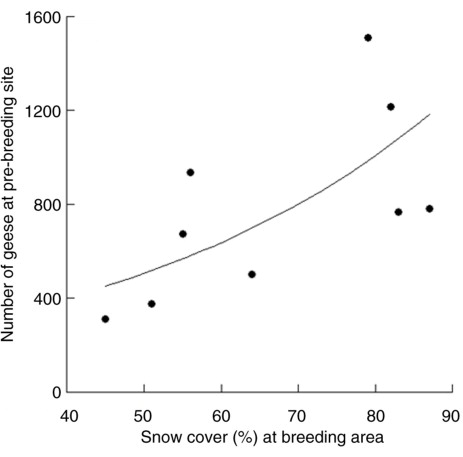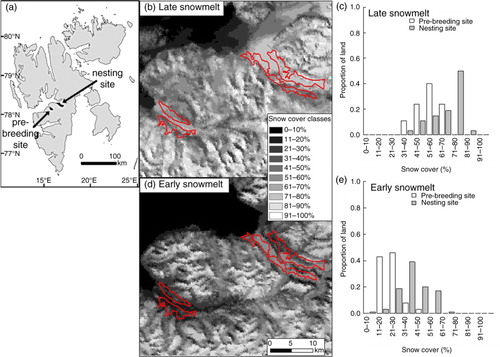Figures & data
Fig. 1 Number of pink-footed geese using an established pre-breeding site during May and spring snow-cover extent at the adjacent main nesting area.

Fig. 2 Snow cover at a pink-footed goose pre-breeding site and adjacent main nesting area in central Svalbard during late May. (a) Svalbard map with locations of the pre-breeding site and nesting area indicated in black, (b) MODIS satellite image of snow cover in central Svalbard when snowmelt was late (2008), and (d) early (2010), (c) proportions of land at the pre-breeding site (white bars) and nesting area (grey bars) covered by snow during spring when snowmelt was late (2008), and (e) early (2010). The pre-breeding site and nesting area are outlined in the satellite images, where visual training points and a standard maximum likelihood classification were used to produce a 10-class standard confusion matrix. This assigned a snow class to each pixel in the image, allowing snow-cover percentages to be estimated.

Table 1 Results of a generalized linear model analysis of numbers of pink-footed geese using the main pre-breeding staging site in central Svalbard during May (2004 to 2012). The interaction between snow and population size of adult geese was tested but not significant (p>0.65).
